Time to Drain
As the murky waters of the canal receded, the authorities conducted a thorough investigation of its depths, uncovering long-hidden secrets. This rare opportunity to glimpse into the canal’s mysteries left Parisian residents on the edge of their seats, eager to discover more about the city’s history.
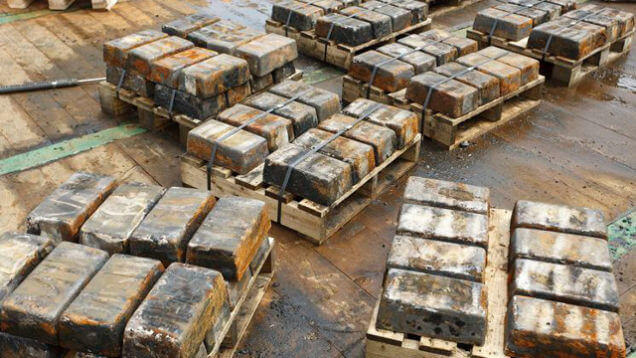
Time To Drain
A Source Of Water
Initially approved by Napoleon Bonaparte, the canal’s construction aimed to provide safe drinking water to the growing population of 550,000 residents. It was evident, however, that this number would only increase with time, prompting the need for a reliable source of water for the city’s future growth.
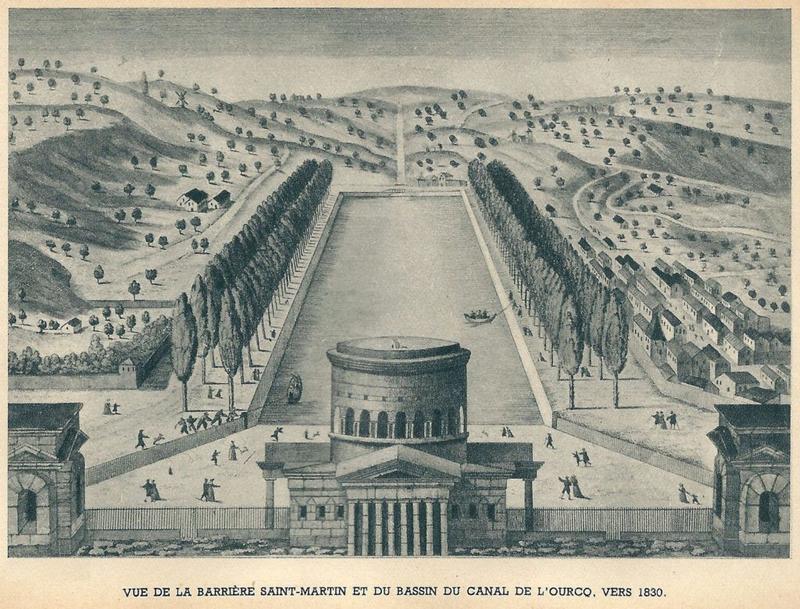
A Source Of Water
Controlling Health Issues
Napoleon’s approval of the canal project went beyond simply providing water access to Parisian residents. He believed that access to clean water was essential to controlling the city’s rampant health problems, such as dysentery and cholera, which had been widely reported at the time.
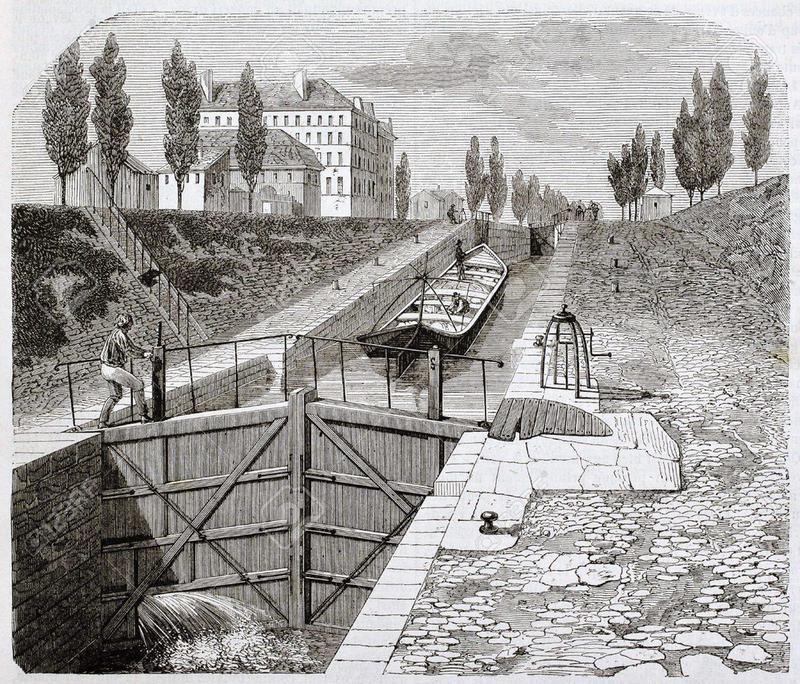
Controlling Health Issues
Two Canals, One Purpose
In addition to providing clean water, the canal served as a crucial transportation route for building materials and food to reach the people of Paris. Its construction encompassed a nearly three-mile circumference around the city, with two other canals, the Canal de l’Ourcq and Canal Saint-Denis, serving the same purpose.
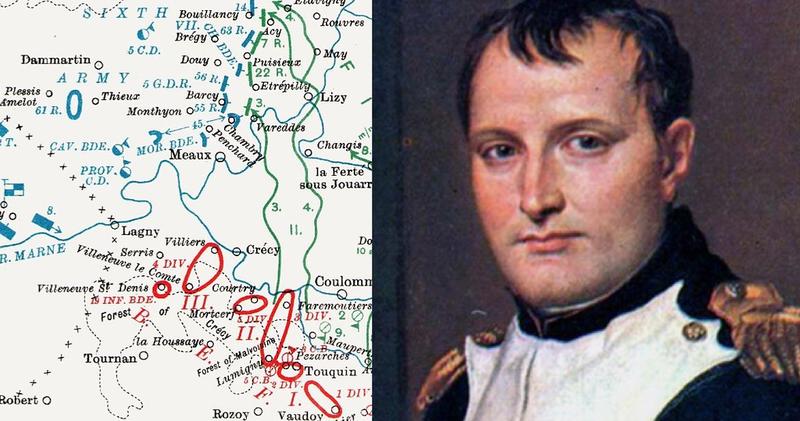
Two Canals, One Purpose
Well Known Canal
Out of the many canals constructed during that period, the Canal Saint-Martin is the most famous. Running underground from the Place de la Bastille to the Bassin de l’Arsenal, this water source holds a rich history that piqued people’s curiosity and made them eager to explore what lay beneath its surface.
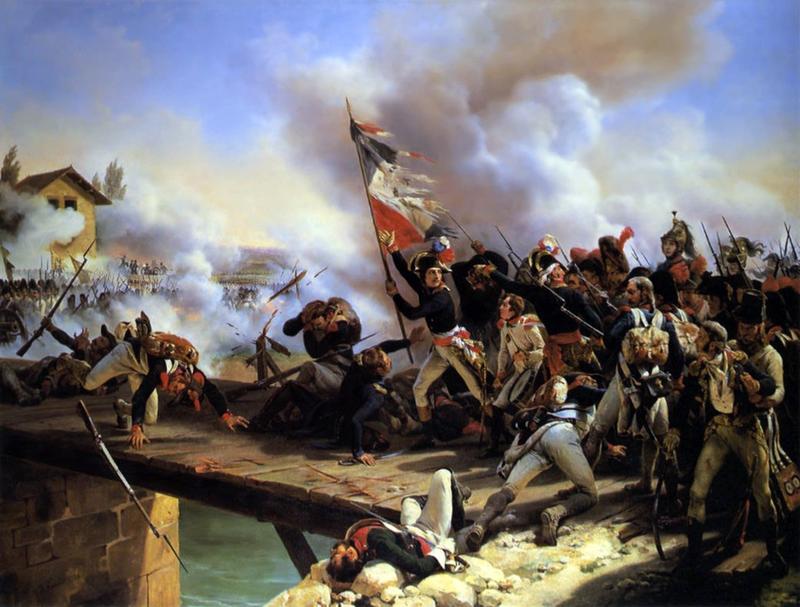
Well Known Canal
Popular Destination Today
Today, the Canal Saint-Martin has become a popular hangout spot for both tourists and locals alike, with Parisians gathering on the banks of the Seine or in nearby cafes, while tourists flock to photograph the bridges and landmarks surrounding the waterway. However, the question remains: why did the authorities decide to drain it?
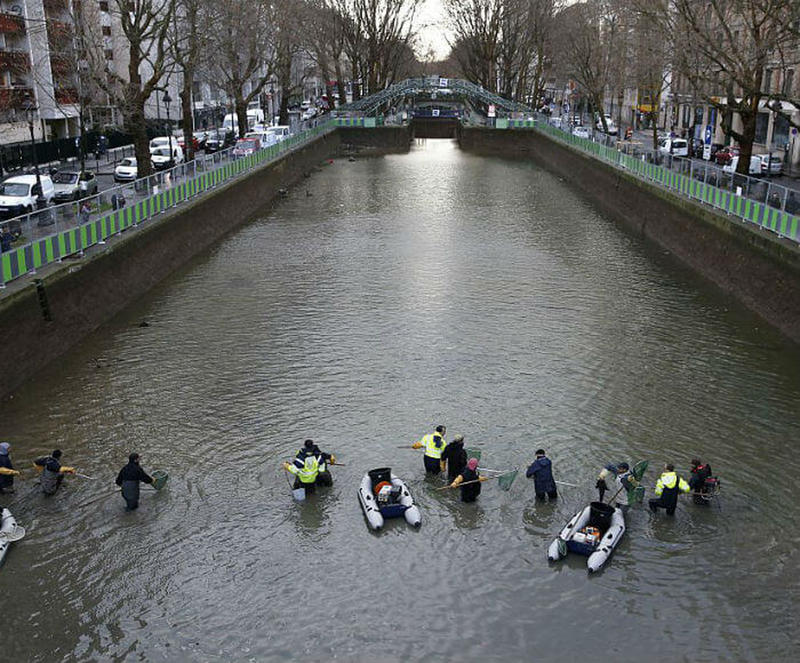
Popular Destination Today
What’s Down There?
Over the course of its 200-year existence, the Canal Saint-Martin has undergone numerous changes. Every 10 to 15 years, Parisian authorities would attempt to empty and clean the canal, removing debris and sediment from its depths. However, these were not routine cleanings.
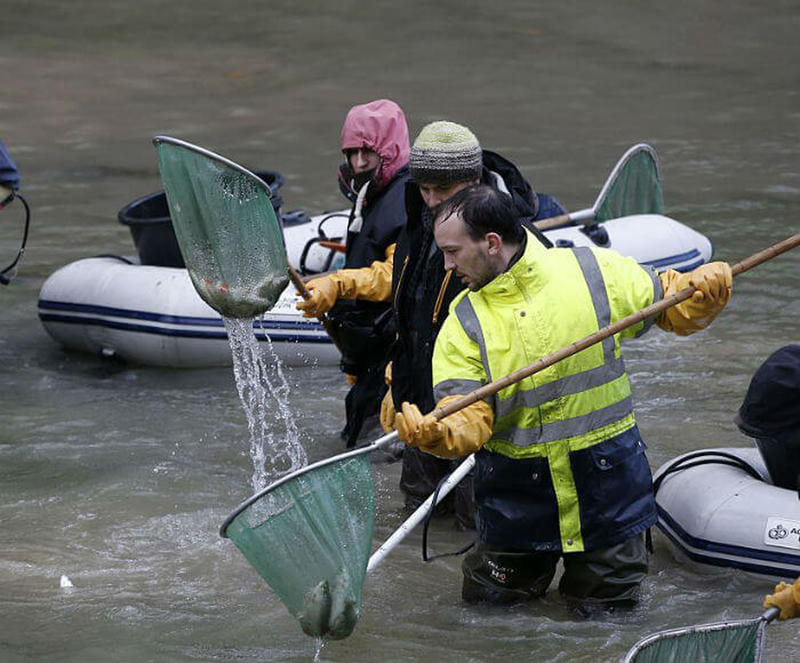
What’s Down There?
Many Were Curious
Paris, also known as the City of Light, held many secrets, and the murky waters of the Canal Saint-Martin concealed some of them. The potential discoveries lurking beneath the beloved canal’s surface captivated the interest of Parisians, leading many to observe the draining operations with great curiosity.
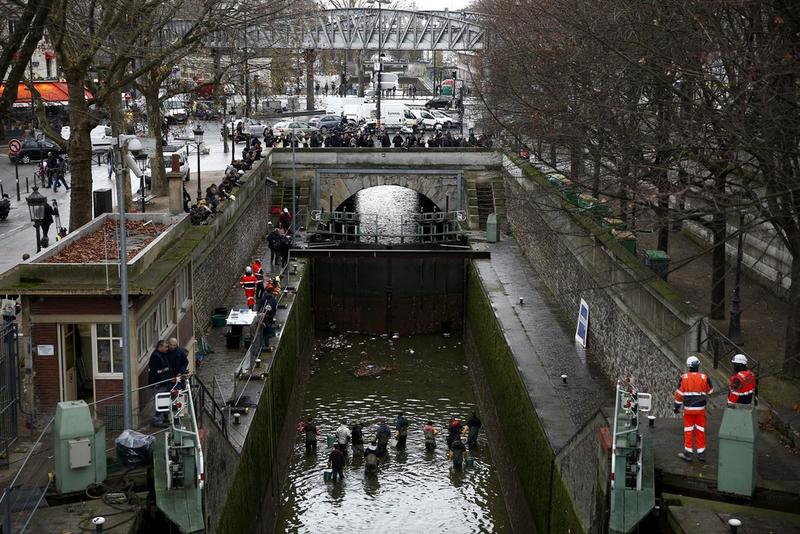
Many Were Curious
Lots Of Waste
The first drainage of the Canal Saint-Martin occurred in 2001, during which more than 40 tons of waste, including gold pennies, bombshells, and bullets, were removed. They even discovered a car from the same era. However, the question remained: what could the authorities expect to uncover during this latest draining operation?
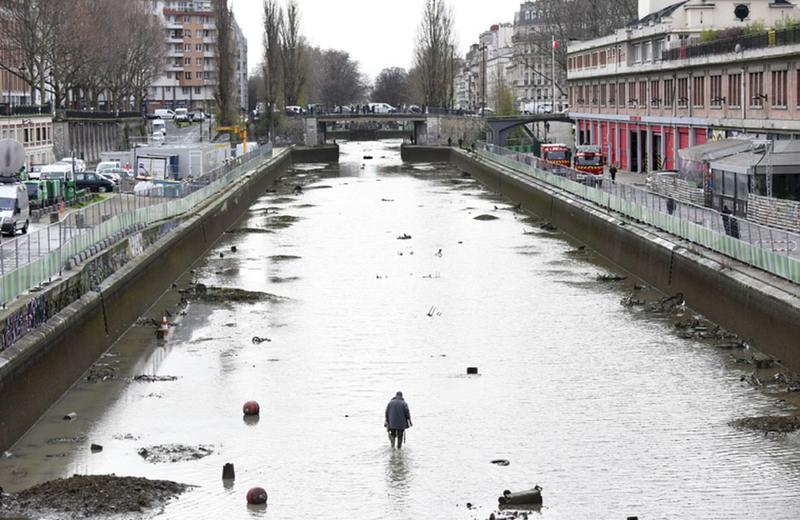
Lots Of Waste
A High Cost
The daunting task of draining the Canal Saint-Martin had begun, and it took three months to remove nearly 3 million cubic feet of water. Despite the city’s expenditure of over $10 million to perform the draining operation, it was deemed a necessary procedure.
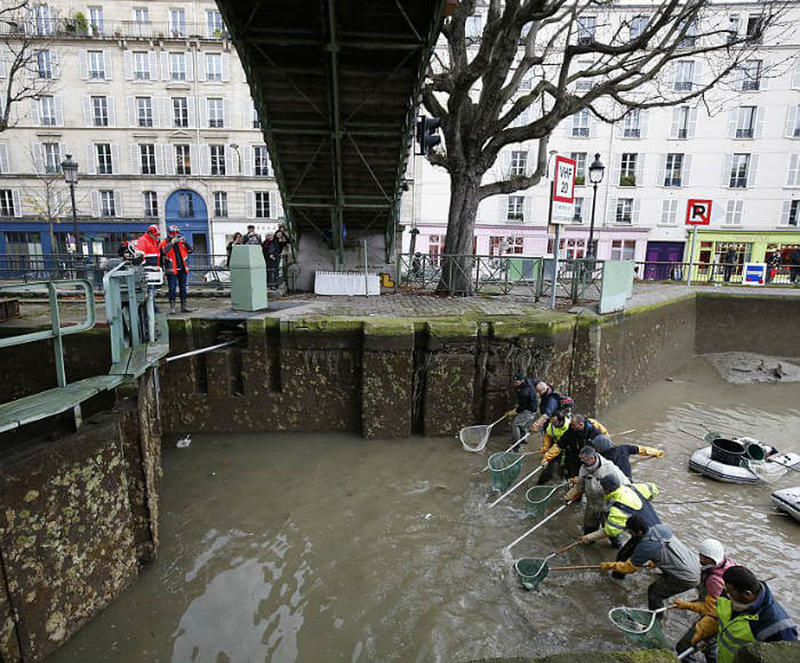
A High Cost
Curiosity Grew
On January 7th, the authorities finally drained the remaining water from the canal, revealing its secrets for the first time in over 15 years. People from all walks of life flocked to the bridges, eager to catch a glimpse of what the authorities had uncovered.
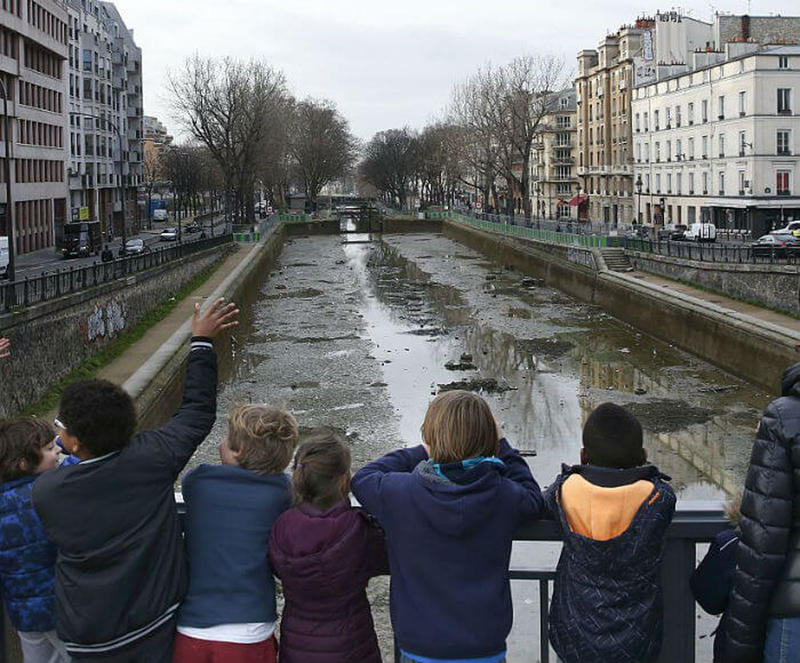
Curiosity Grew
Seeing The Bottom
It was a momentous occasion, as it was rare to see the Canal Saint-Martin completely devoid of water. Onlookers were astounded by the surreal sight of the canal’s bottom, and their curiosity was piqued.
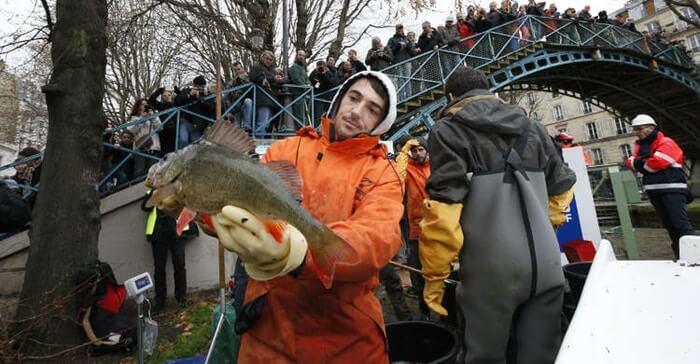
Seeing The Bottom
The Living Beings
The workers drained the canal until only 25 inches of water remained, after which they waded through the shallow water, searching for any items still remaining. The crew caught around five tons of bream, trout, and carp, which were relocated to better breeding grounds.
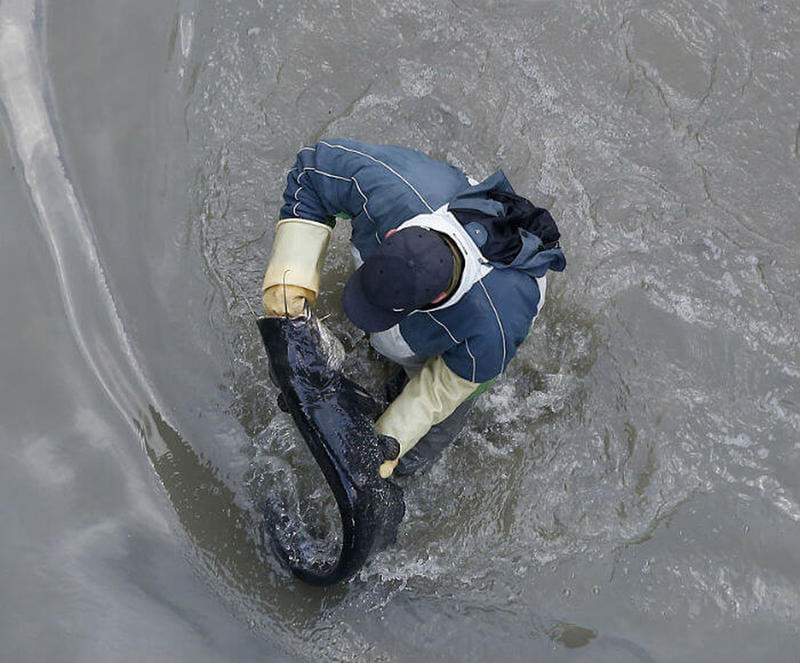
The Living Beings
Missing Bikes
Numerous items found their way into the depths of the canal over the years, including many bicycles from the city’s Vélib car-sharing system. Despite the addition of 14,500 bikes to Parisian streets as part of the program in 2007, many of them ended up in odd places, including the canal.
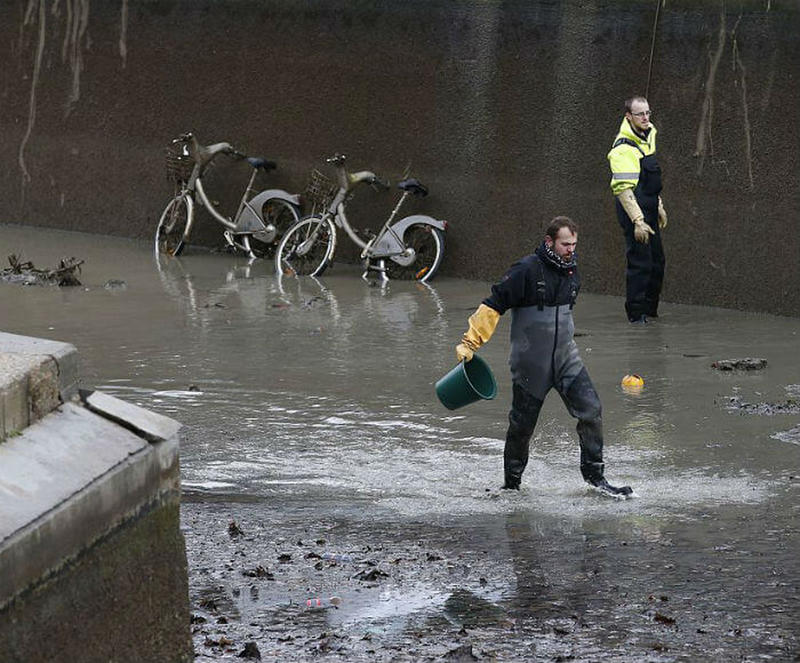
Missing Bikes
Strange Finds
As the draining process continued, more findings surfaced. Workers discovered wheelie bins and mopeds, and even a toilet was found at the bottom of the canal. These items had to be removed because they contributed to the water’s murkiness.
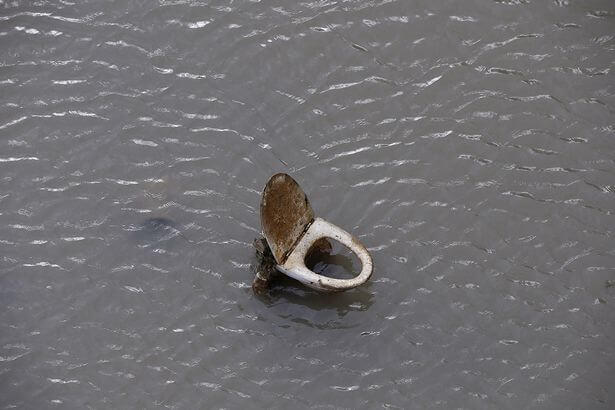
Strange Finds
What Ended Up In The Water
During interviews with the residents, many compared the draining process to a bizarre submarine treasure hunt. Some were amazed at the sheer number of Vélibs found in the water, and speculated that they had been stolen and dumped in the canal after being used by thieves.
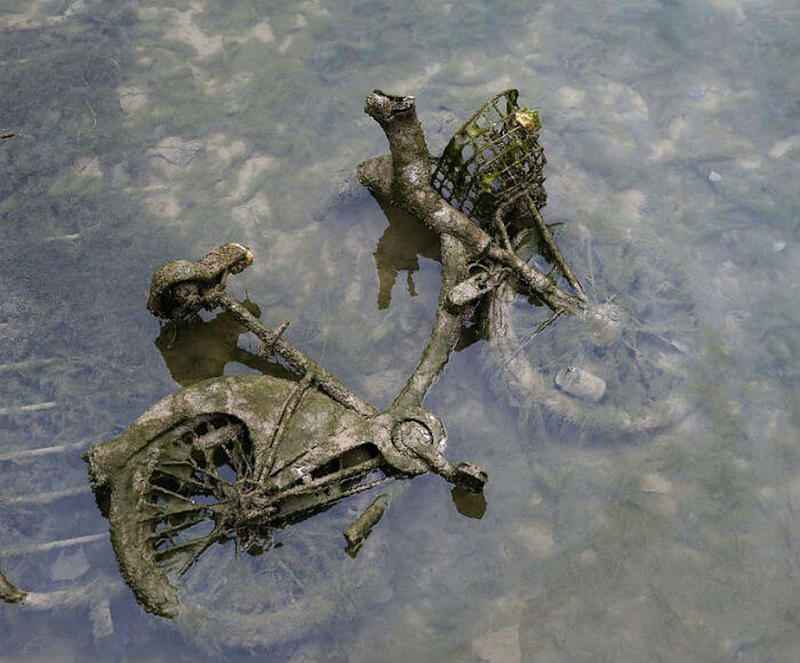
What Ended Up In The Water
Extremely Unclean
One onlooker said: “That’s Paris for you.” The fact is that the city has gotten quite dirty. The onlooker said that he was there when it was first drained, and he didn’t remember such a level of filth. He claimed that younger people were using the canal as a trash bin.

Extremely Unclean
More Bizarre Items
Indeed, some of the items found in the canal during the draining process were quite peculiar. For instance, workers discovered a street sign, a toilet bowl, and even a safe. The safe was opened, but it was empty. There were also various personal belongings like sunglasses, mobile phones, and wallets, which were likely accidentally dropped into the canal.
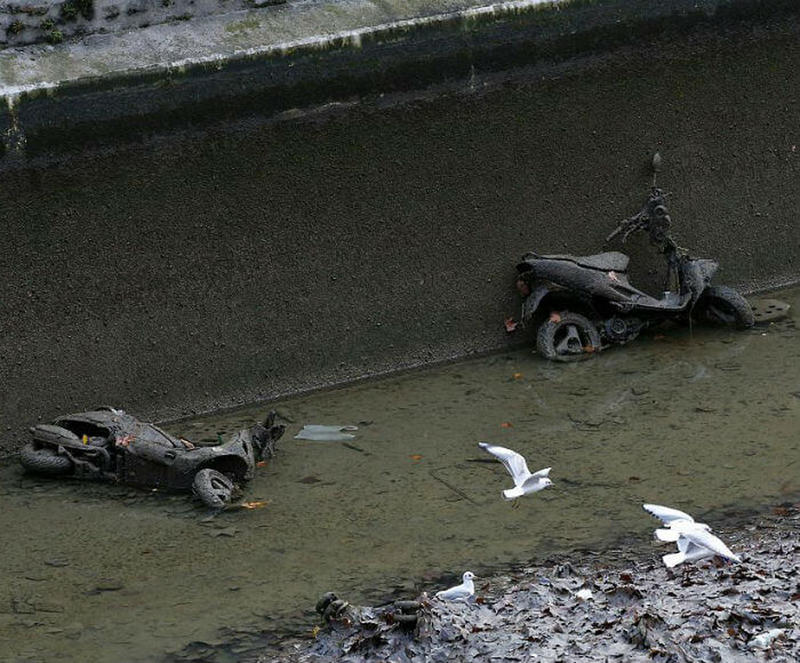
More Bizarre Items
Never Ending Garbage
It’s not surprising that mundane items such as traffic cones and glass bottles were found, as littering and improper disposal of waste is a common issue in cities. However, the unusual items found in the Canal Saint-Martin definitely added to the intrigue and excitement surrounding the draining process.
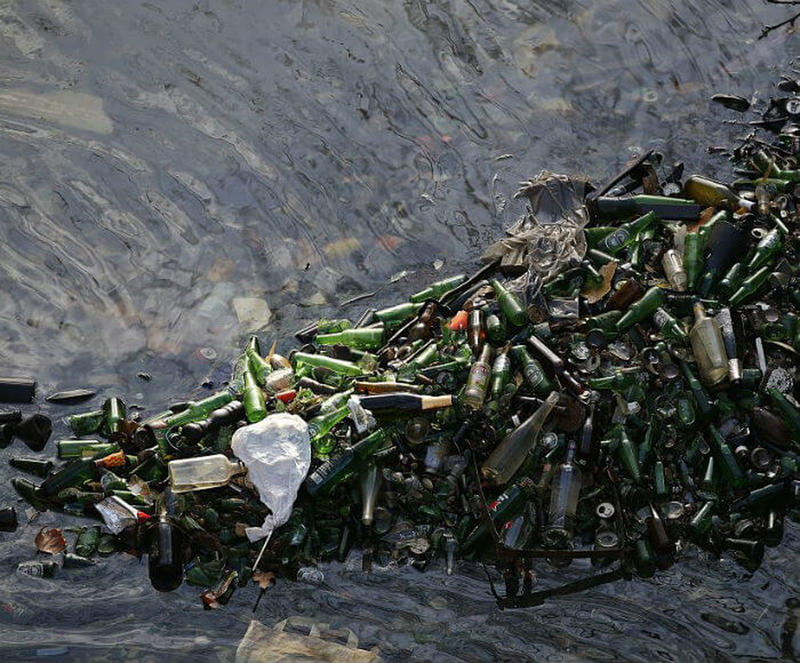
Never Ending Garbage
How Did That End Up Here?
It’s certainly a mystery how an office chair ended up in the Canal Saint-Martin. It’s possible that it was thrown in as a prank or as a way to dispose of unwanted furniture. Alternatively, it could have accidentally fallen in while being transported or disposed of improperly. Whatever the reason, it certainly added to the bizarre collection of items found during the draining process.
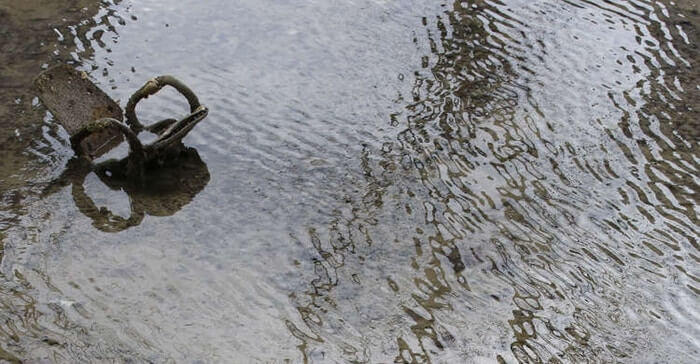
How Did That End Up Here?
Covered In Murk
Developing theories about how the unusual items ended up in the canal was an enjoyable pastime for many onlookers. One such item that sparked curiosity and speculation was a suitcase that had clearly been in the murky waters for an extended period, and was now quite repulsive.
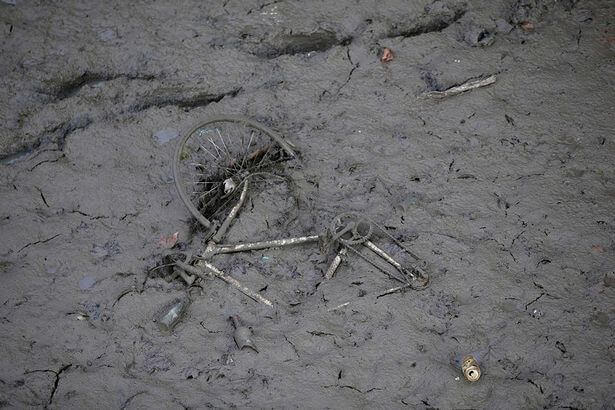
Covered In Murk
A Stray Traffic Cone
The presence of a traffic cone in the depths of the Canal Saint-Martin was a puzzling sight. It left many wondering who could have put it there. Some speculated that an enraged driver may have flung it in the water in a fit of road rage, leaving the cone to sink into the murky depths.
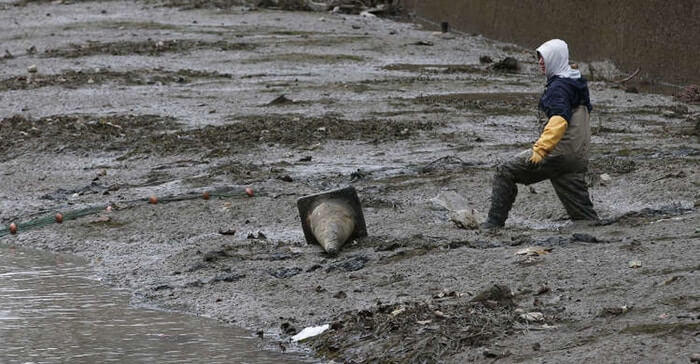
A Stray Traffic Cone
The Shopping Cart
A shopping cart was among the items that generated a lot of interest. How did it end up at the bottom of the Canal Saint-Martin? Did someone accidentally push it in while unloading their groceries? It seems that someone really shopped until they dropped. However, this also highlights that Paris is an excellent shopping destination.
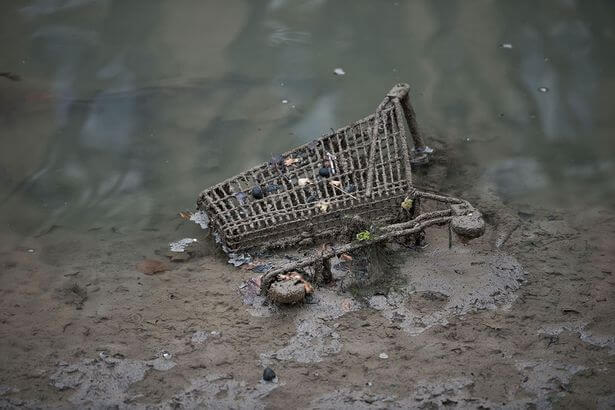
The Shopping Cart
Getting The Fish To Safety
As the draining of the Canal Saint-Martin progressed, workers remained focused on the task of relocating the fish to safety. For three consecutive days, the cleanup crew worked tirelessly to catch the fish and transfer them to more appropriate habitats in the river.
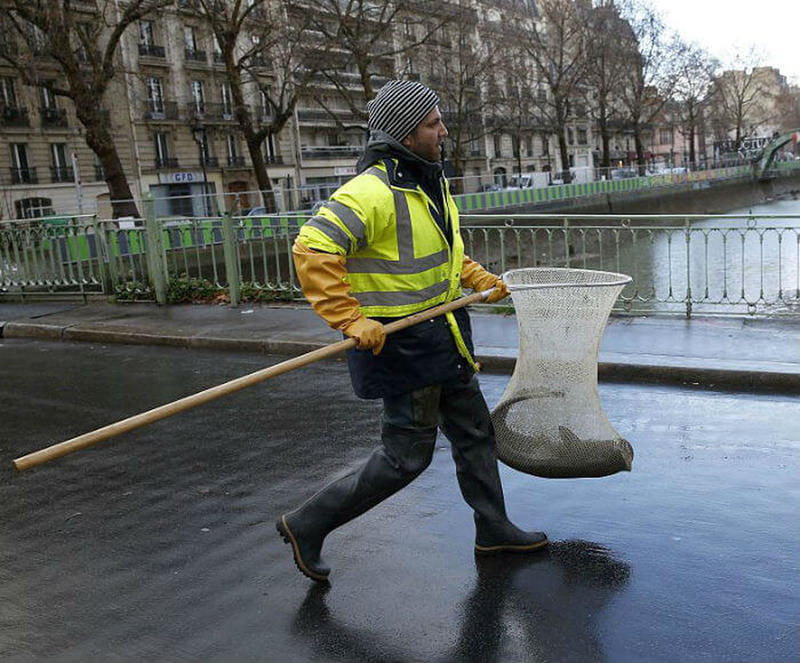
Getting The Fish To Safety
Possible To Swim
Despite the disappointing sight of trash in the canal, people remained optimistic. The discoveries made in the Canal Saint-Martin shed light on Paris’s littering problem, and officials used this as an opportunity to address the issue. The deputy mayor even mentioned the possibility of allowing swimming in the canal in a few years.
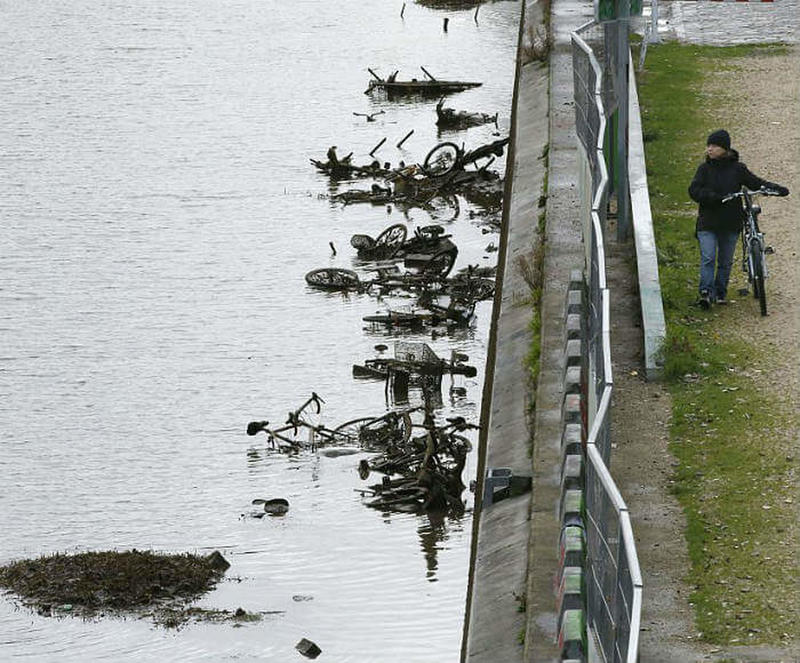
Possible To Swim
Prime Real Estate
If the water in the Canal Saint-Martin had not been drained, the seriousness of the situation might not have been fully comprehended. This area is considered prime real estate, but many Parisians paying the price for it were unaware of the unsightly items lying so close to their homes.
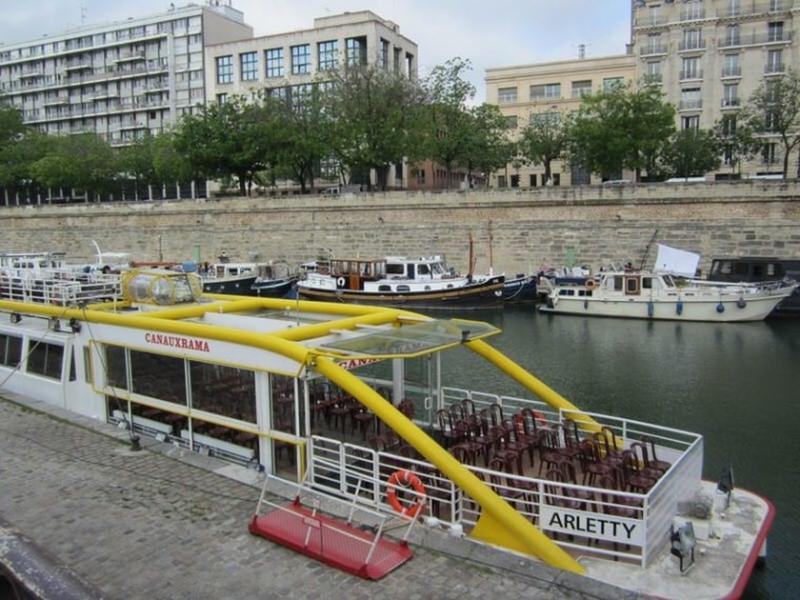
Prime Real Estate
A Desirable Spot
The Canal Saint-Martin was always a visually appealing and verdant waterway, which greatly contributed to the high real estate prices in the area. Additionally, it served as an inspiration for many artists, as evidenced by the street art decorating the banks’ walls, further adding to the area’s cultural richness.
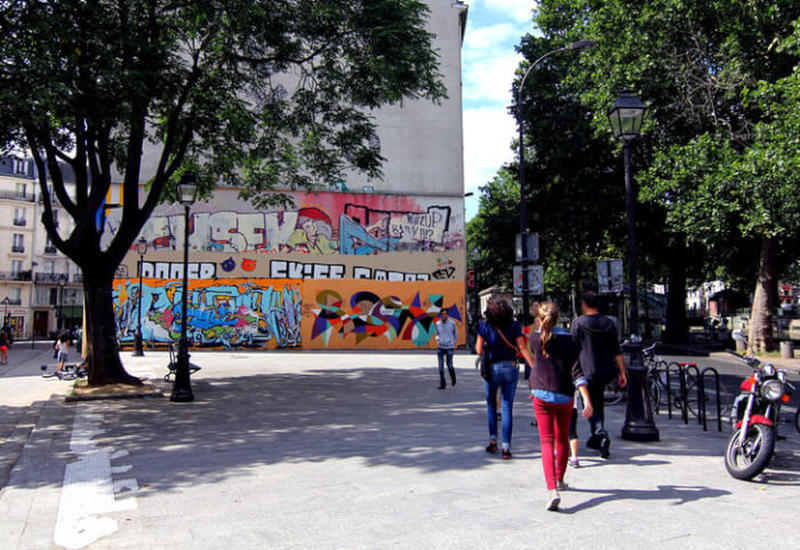
A Desirable Spot
It Took Two Decades
It took 20 years to finish the construction of the three canals that were excavated throughout Paris. Together, these water channels spanned over 80 miles. The Canal Saint-Martin, which linked the Canal de l’Ourcq and the Seine River, was the most notable and garnered the most interest.
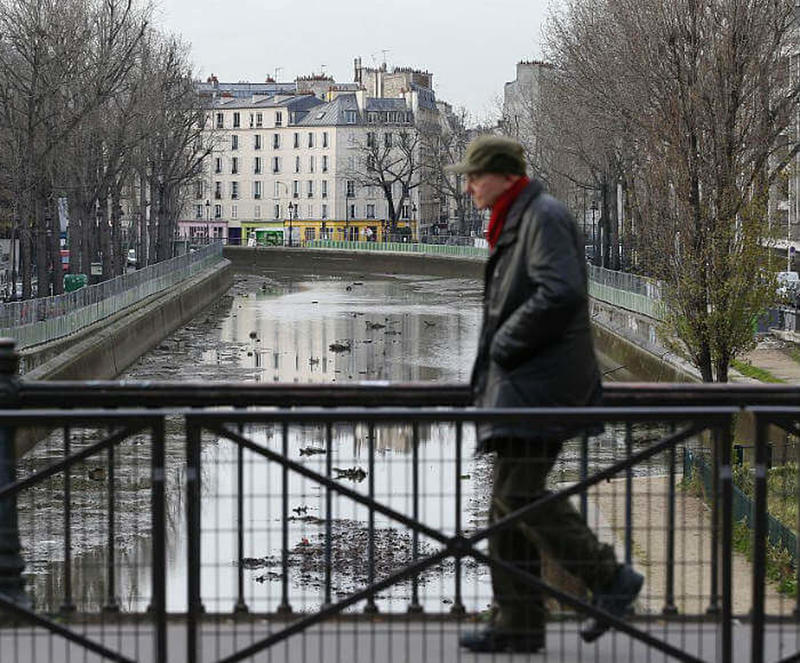
It Took Two Decades
Lively Nightlife, More Garbage
If you are familiar with Paris, you know that the area where the Canal Saint-Martin is located has a lively nightlife. This once peaceful neighborhood now draws large crowds of young people, leading to an increase in waste in the waterway.
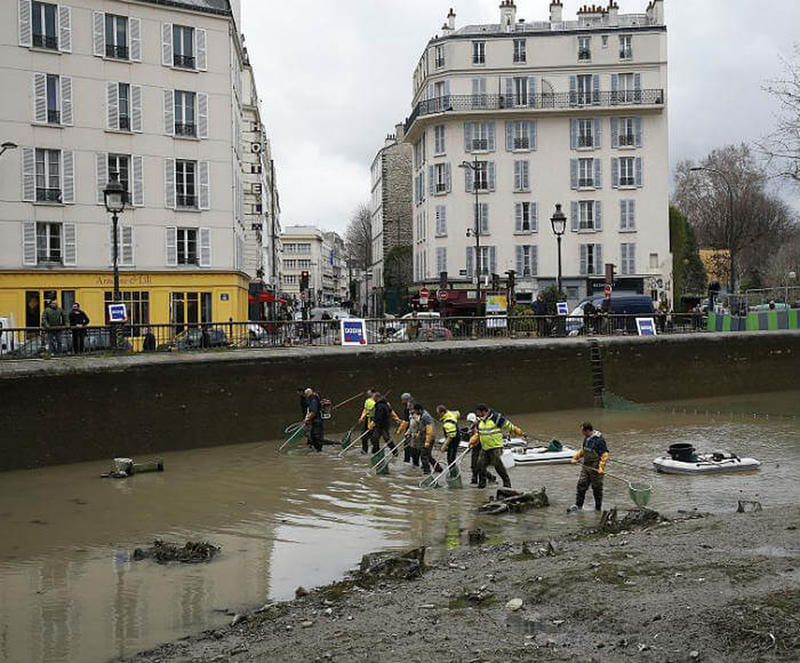
Lively Nightlife, More Garbage
Started Construction In 1802
After receiving approval from Napoleon, construction on the canal began in 1802 and lasted for around 10 years. Despite the lengthy timeline, the project proved to be a valuable addition to the transportation infrastructure of Paris and a worthy undertaking for the city.
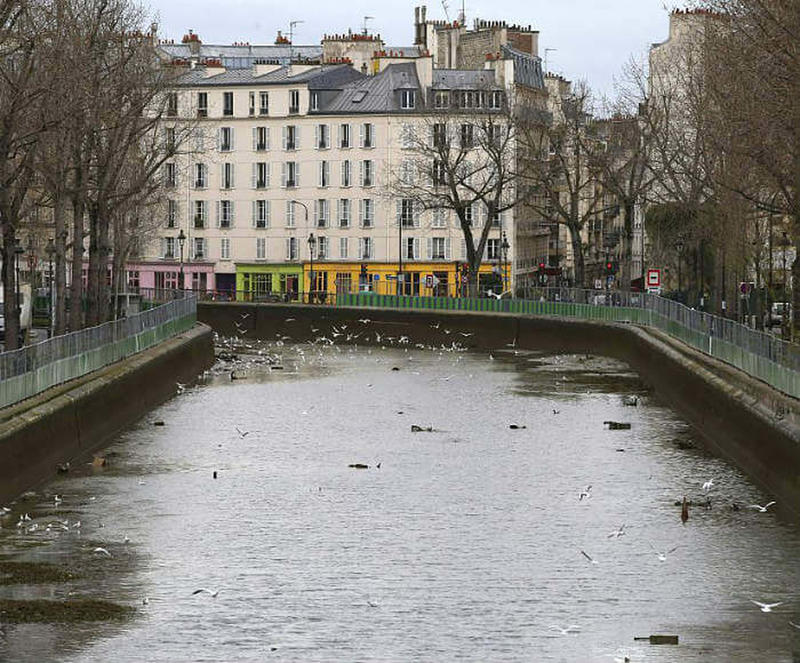
Started Construction In 1802
Where It Runs
Flowing beneath La Bastille, the canal originated from the Seine’s Bassin de l’Arsenal. It then passes near Place de la République before reaching the Bassin de la Villette in the north, where it meets the Canal de l’Ourcq.
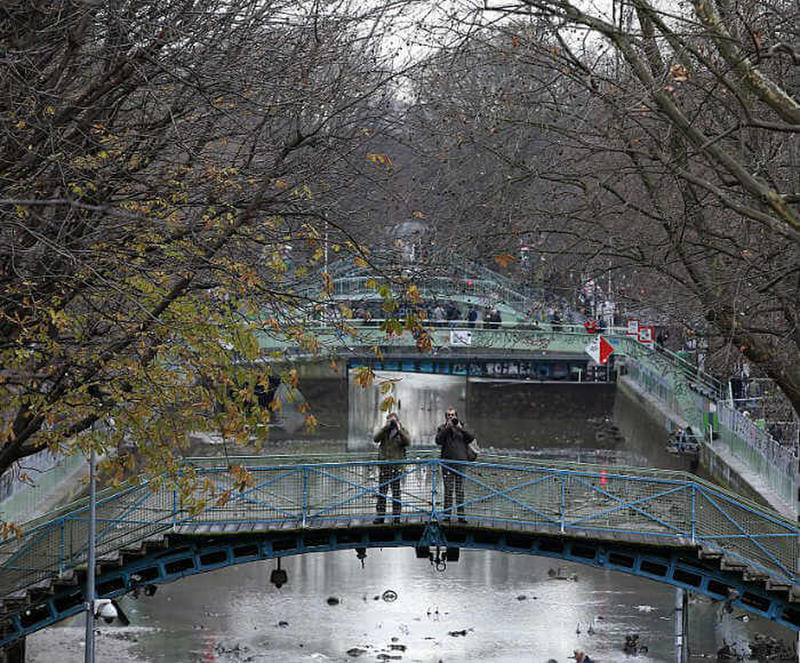
Where It Runs
Endless Bottles and Cans
During the draining of the waterway, the workers discovered an excessive amount of bottles and cans. This was not just a few hundred empty containers, but rather, hundreds of thousands of them were found at the bottom of the canal after the operation was completed.
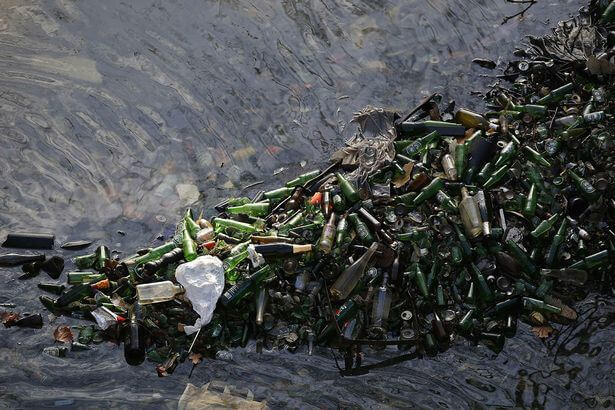
Endless Bottles And Cans
Through The Center
The Canal Saint-Martin travels through the capital’s heart, which is three miles long. This includes the 10th arrondissement, which is best known for its fashion-forward neighborhood. Additionally, this area has gained immense popularity for its well-known tourist attractions and bustling nightlife.
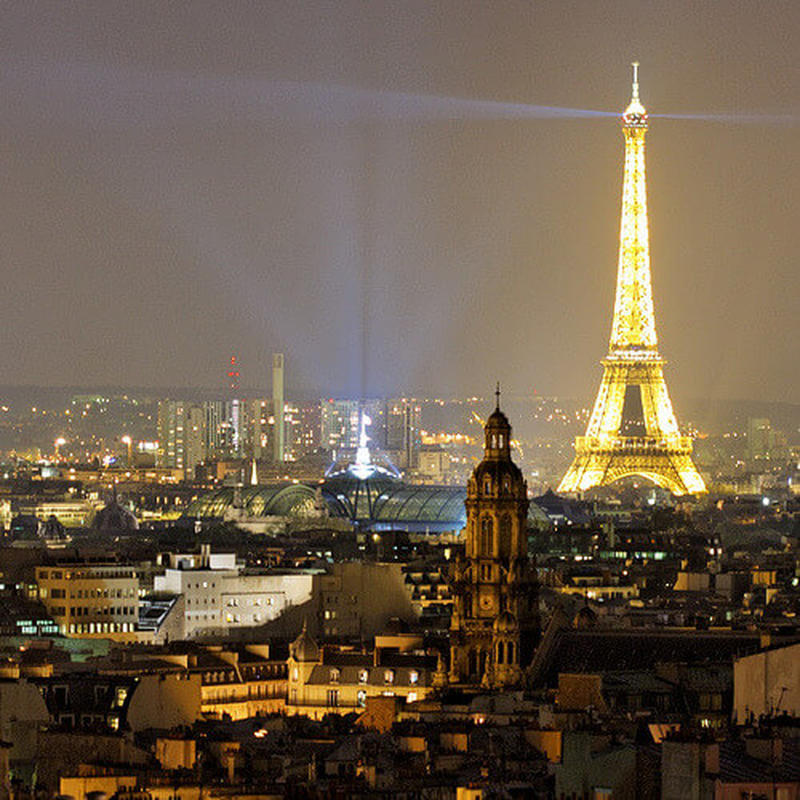
Through The Center
More Finds
The murky waters yielded more intriguing findings, which drew the attention of the onlookers. Among the various items retrieved by the workers was an old-fashioned stereo that appeared to have been submerged for a considerable time.
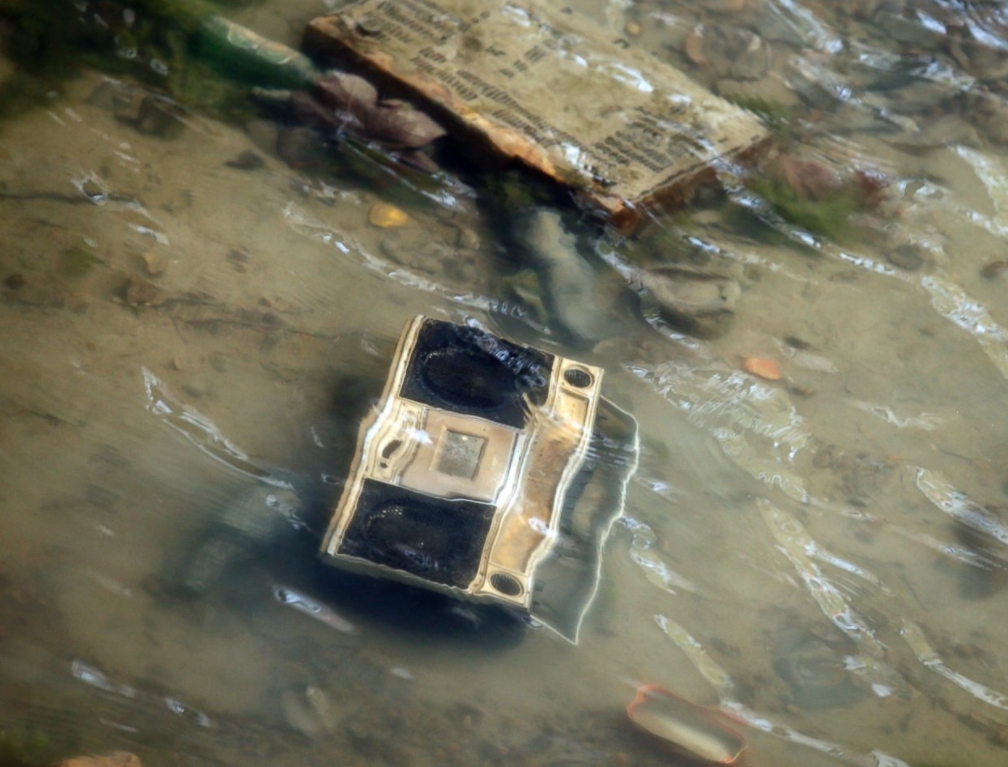
More Finds
Old Vintage Items
Despite undergoing frequent cleaning procedures, the canal continues to yield many vintage items, leaving one to ponder how these objects found their way to the bottom of the waterway. Intriguingly, some of these items date back to before the canal’s last cleaning.
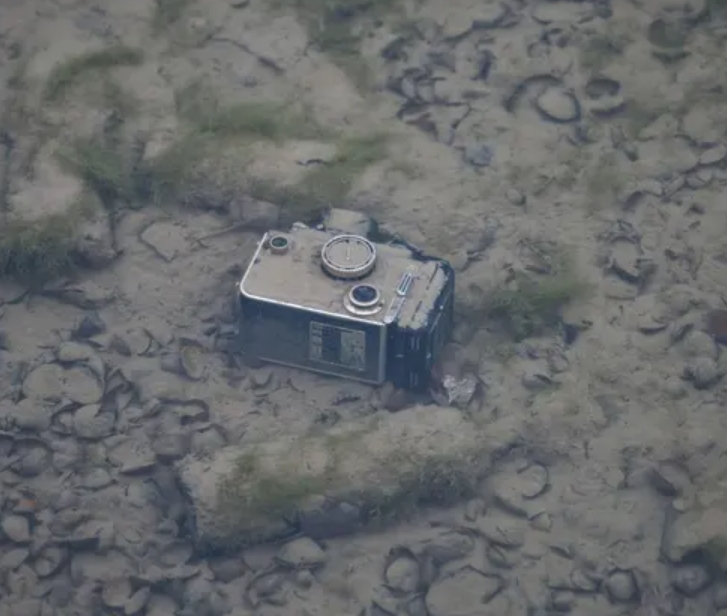
Old Vintage Items
Fallen Personal Belongings
As the water from the Canal Saint-Martin is drained, additional items are being uncovered. While one might anticipate finding grimy and antiquated objects at the bottom of the canal, workers also came across some intriguing finds, such as a seemingly new stuffed animal.
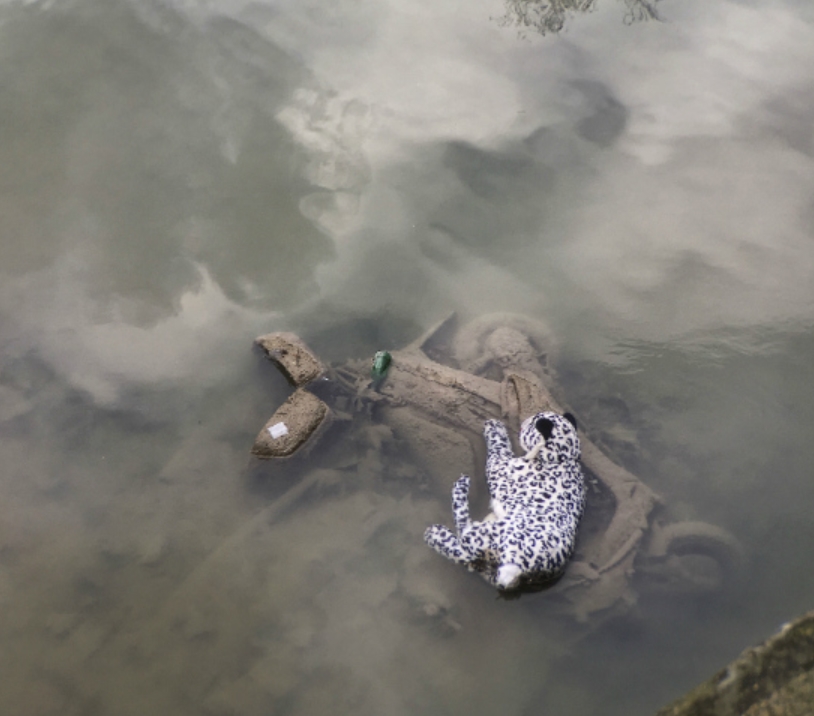
Fallen Personal Belongings
A Chair
Submerged in the murky water and heavily overgrown with moss, this muddy chair presents a rather eerie sight. The possibilities of how this chair ended up in the canal are endless – was it thrown in out of anger or was it the result of a tragic accident? One can only speculate.
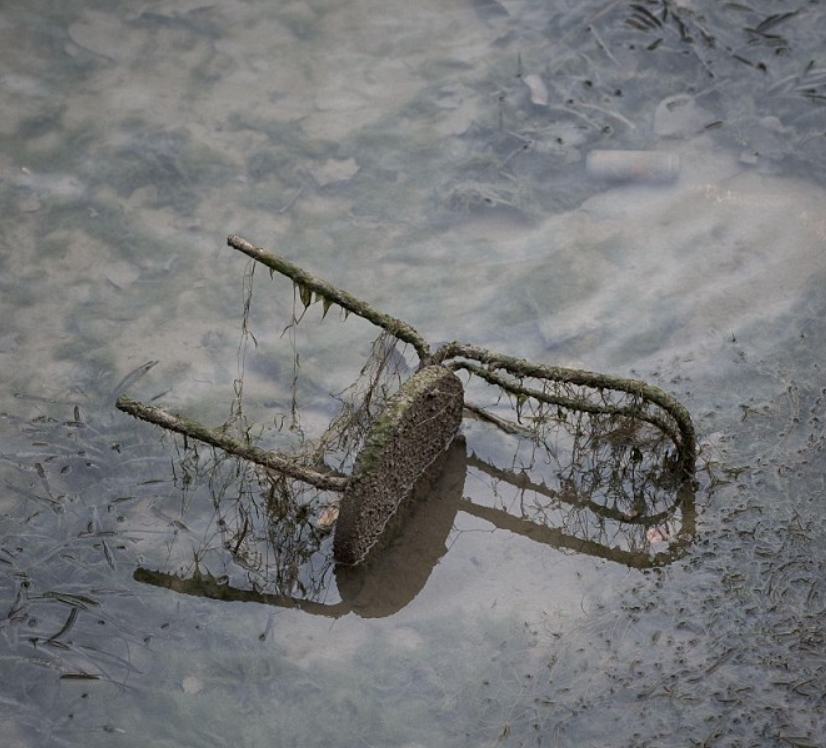
A Chair
The Long Process
The workers had to dedicate several hours to ensure that everything went as per the plan. Their responsibilities included cleaning the canal, relocating the fish, and renovating the four double locks of the waterway. It took them slightly over three months to complete the entire task.
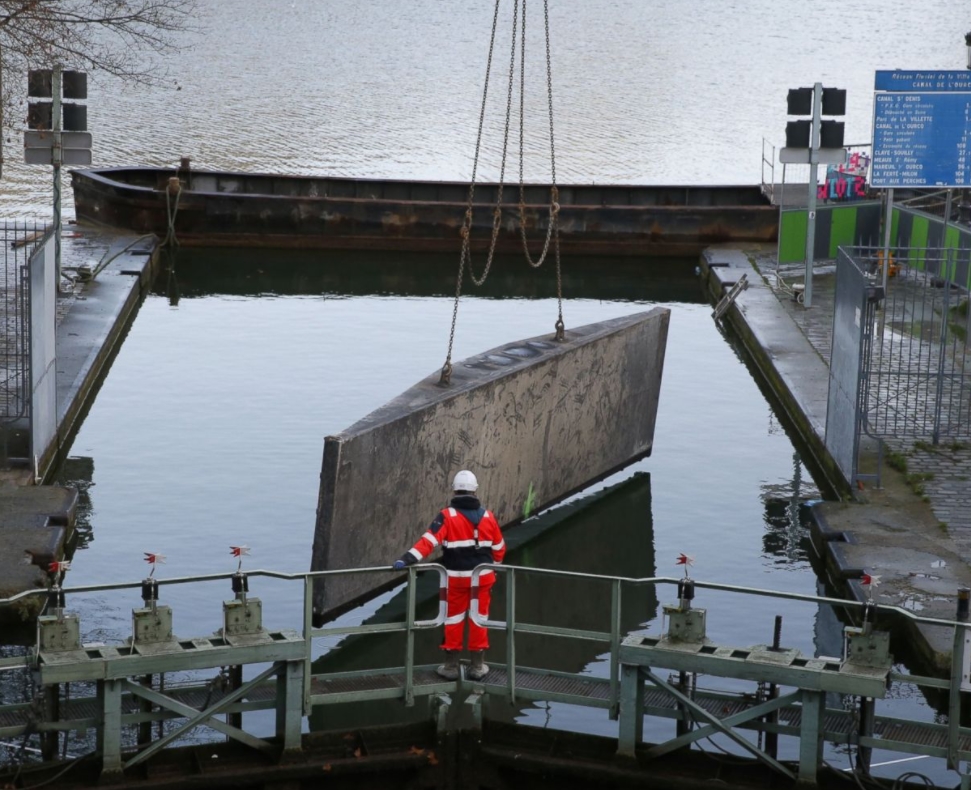
The Long Process
Making It Happen
Considering the massive scale of this operation, it was only natural that a massive workforce was involved in its completion. Hundreds of workers worked efficiently to ensure the safety of everyone involved, making use of heavy machinery to carry out the task.
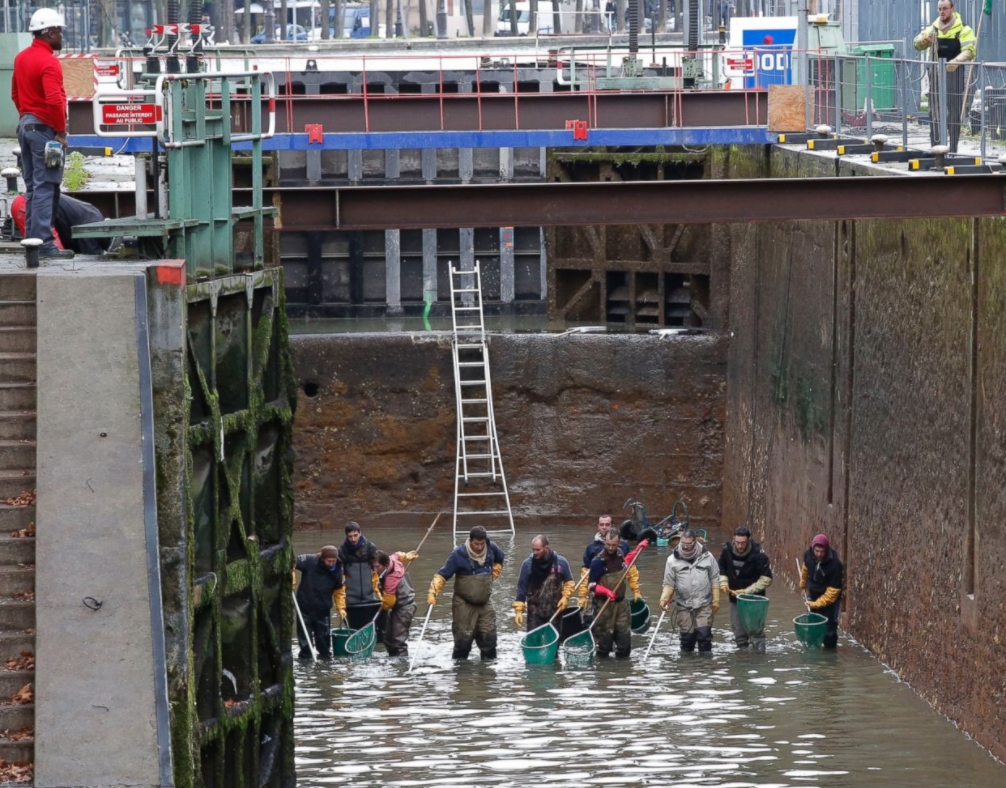
Making It Happen
Proper Equipment Needed
Cleaning the canal is a hazardous process, given the many unforeseen mishaps that can occur. Given that this procedure is carried out once every decade or so, it is an event filled with anticipation. It is a colossal undertaking that necessitates the municipality acquiring the requisite equipment and machinery.
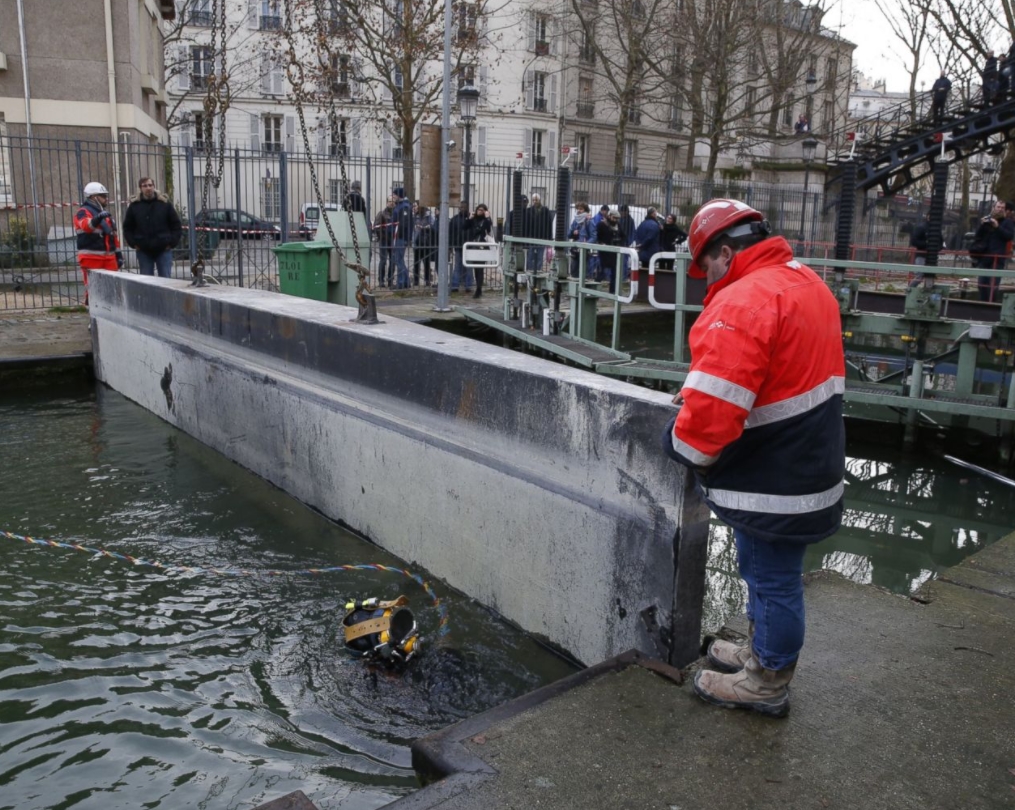
Proper Equipment Needed


